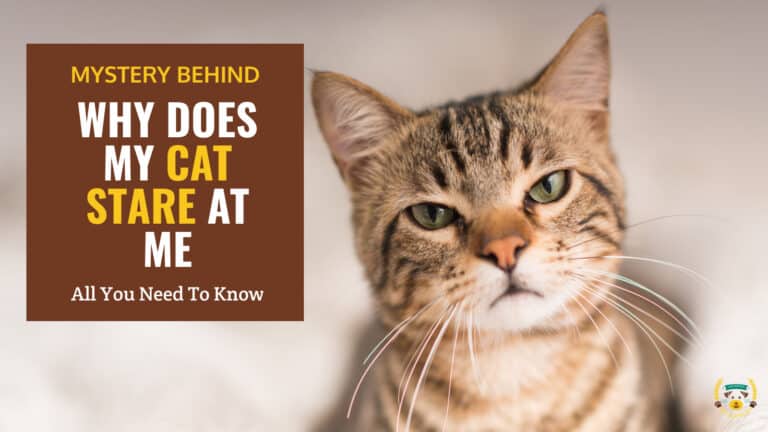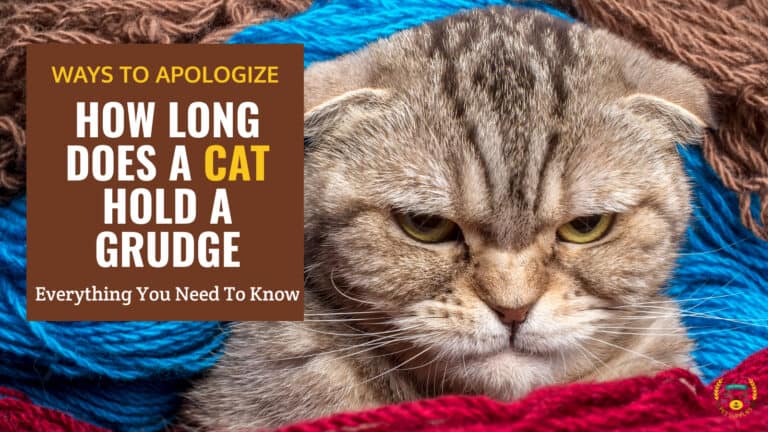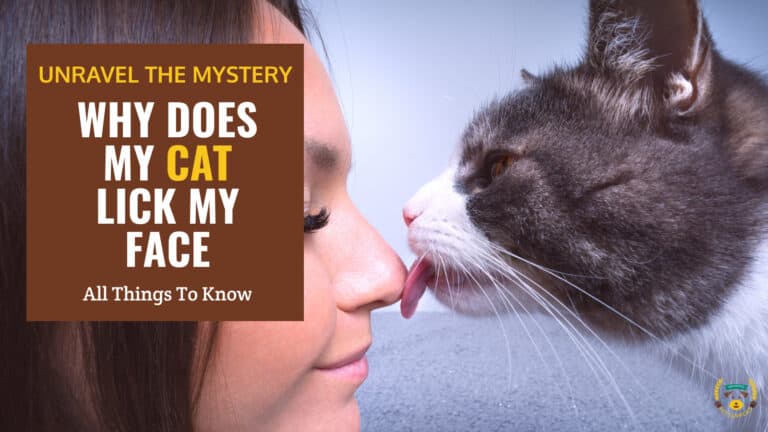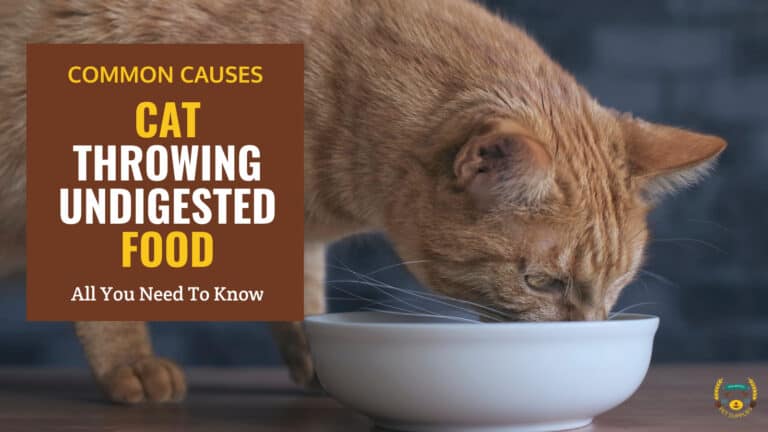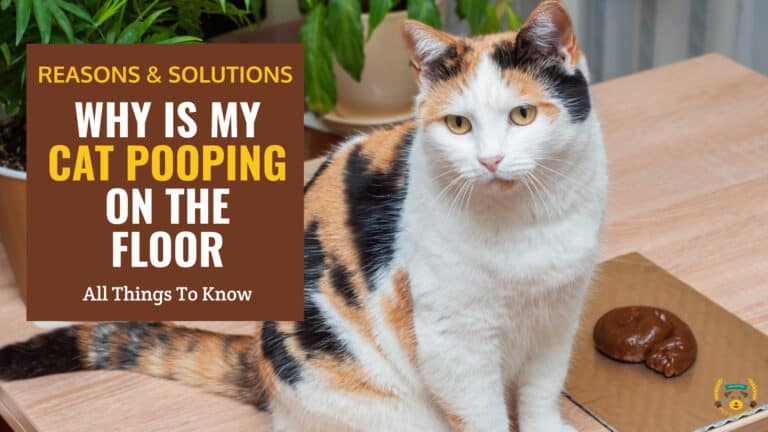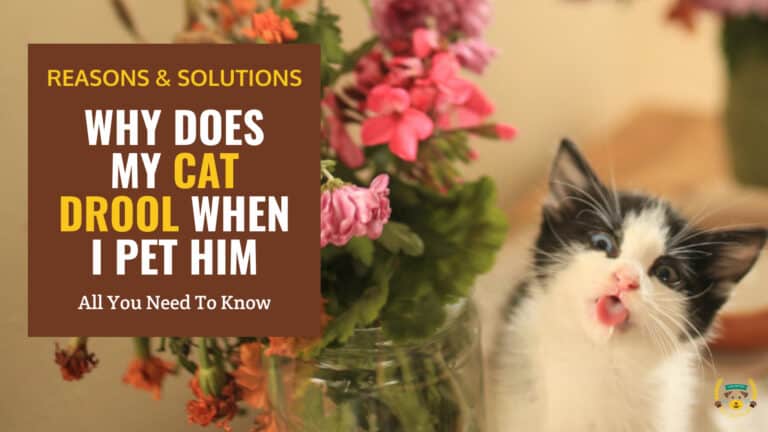How Often Do You Take Your Cat to The Vet?
Last updated: March 15, 2024
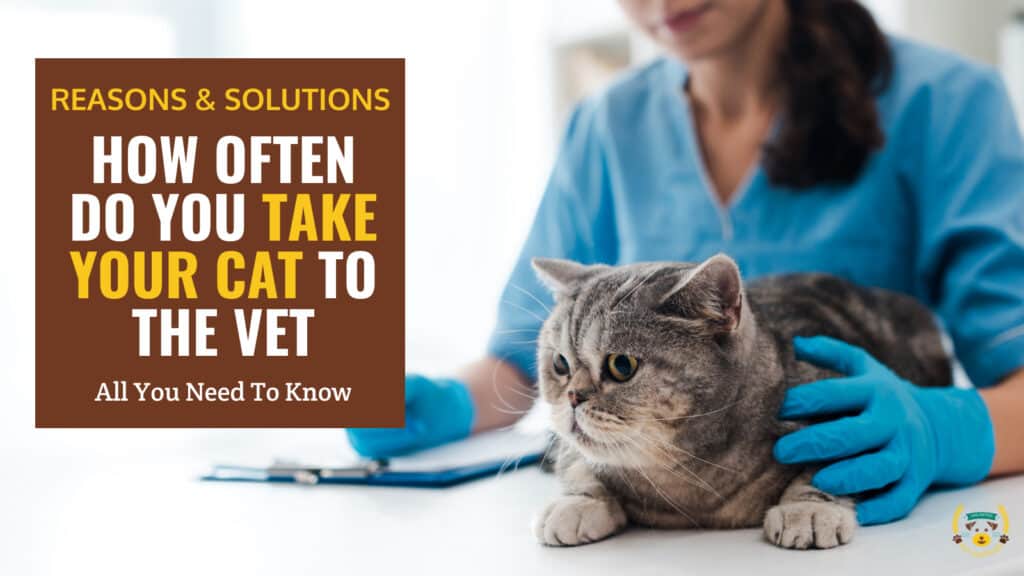
Summary
- Vet visits for cats depend on age, health, lifestyle.
- Kittens: frequent visits for vaccines, monitoring (every 3-4 weeks, then every 1-2 months).
- Adult cats: annual checkups (1-6 years), biannual checkups (7+ years).
- Senior/geriatric cats: more frequent monitoring, possible medication/diet adjustments.
- Emergency vet visits needed for serious issues or concerning symptoms.
- Consult your veterinarian for specific advice on your cat's needs.
Regular vet visits allow early detection and prevention of health issues in cats. Kittens require frequent wellness exams for vaccines, deworming and general monitoring as they grow. Annual checkups continue into adulthood to watch for conditions like dental disease, arthritis and cancer.
In this article, we will provide guidelines on the frequency of vet visits depending on your cat's age and health status. You will get all the information you need to ensure that your furry friend is constantly in good health. We will also answer some frequently asked questions related to the topic to ensure all the aspects of the topic are covered.
Factors that influence vet visit frequency
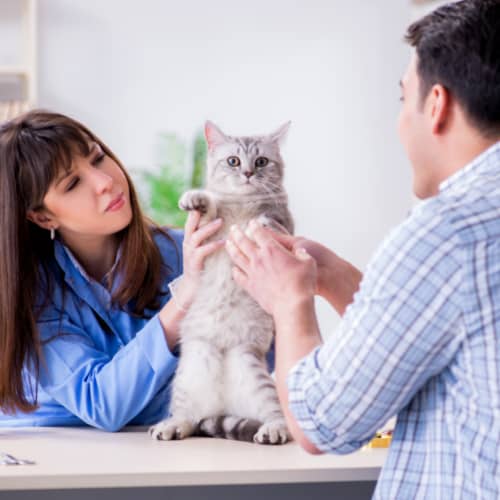
When designing the ideal veterinary visit schedule, cat owners must consider key aspects of their pet’s lifestyle and environment. These influencing factors help determine the frequency at which exams and preventative care are recommended.
Age
Kittens and seniors require more diligent medical care than healthy adult cats. Kittens need supplements, vaccines, and parasite control while developing immune systems. Geriatric cats warrant closer monitoring for age-related diseases.
Age plays a significant role in how often a cat needs to visit the vet. While excessive drooling during petting sessions is not uncommon for some cats, it's always a normal behavior. If you're concerned about your cat's drooling, especially if it's accompanied by other changes in behavior or litter box habits, it's important to consult a veterinarian to rule out any underlying medical causes.
Medical History
Any preexisting conditions or genetic disease risk may necessitate additional vet oversight. Cats taking medications need adherence monitoring and lab work for side effects.
Indoor vs Outdoor
Outdoor cats with exposure to other animals, plants, and toxins face higher odds of illness or injury, needing vet care annually. Indoor cats see vets every 1-2 years.
Multi-Cat Homes
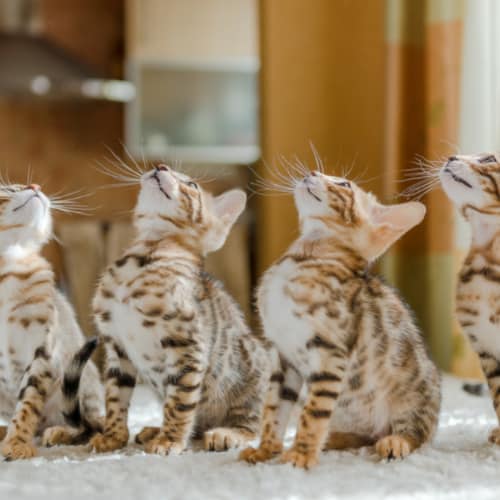
Households with multiple cats have elevated infectious disease transmission rates from prolonged close contact. This risk calls for thorough annual vet exams for all of your pets.
Diet and Weight
Overweight cats require nutritional counseling and weight checks every 6-12 months. Therapeutic diets for diseases add visit factors too.
Providing the right nutrition for your indoor feline friend is crucial for their overall health and well-being. Indoor cats have different needs compared to their outdoor counterparts, and choosing the appropriate food can significantly impact their energy levels, weight management, and even fur health. For an in-depth exploration of the best cat food options specifically formulated for indoor cats, check out our cat foods for indoor cats guide.
Activity Level
More active cats need consistent musculoskeletal exams and injury care. Low-activity cats require motivation and solutions from the vet.
Budget
While budget limits care options, essential prevention elements can be accessible through pet insurance, payment plans, discounted services, and other cost-saving measures.
Kitten Vet Visits
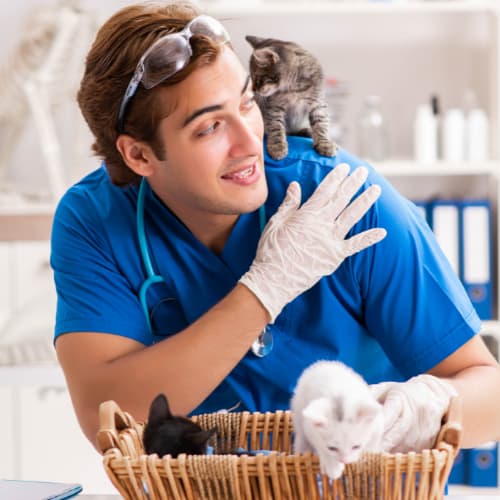
Kittens have a rapid series of developmental milestones in their first year of life. This critical growth phase also leaves them susceptible to parasites, viruses and other illness risks. As a result, new kitten care follows an intensive schedule of veterinary exams in the first 12 months.
Birth to 6 months
Typically, healthy kittens will see the vet every 3-4 weeks from birth to 6 months old. Each visit provides a thorough physical exam to check weight gain, organ development and normal function. Kittens also receive a series of core vaccines on a timed schedule for maximum immunity.
Regular deworming protects against internal parasites often acquired from mothers or the environment. Any discovered health issues can be promptly addressed as well during these frequent wellness checks.
7-12 months
Vet appointments continue from 6 months to 1 year old, though slightly less often. With all vaccines given and most growth completed, exams can focus more on spay/neuter surgery around 6 months old if not already performed.
Some additional boosters may be recommended later, depending on the kitten’s risk factors. As they transition into the adult stage of life, priorities shift from the establishment of good health to maintenance and disease prevention.
Consistent veterinary care in the first year gives kittens the best start to a long, fulfilling life. From nourishing a growing kitten’s needs to teaching new owners about proper care, those early visits pave the way for a healthy adult cat down the road.
Adult Cat Vet Visits
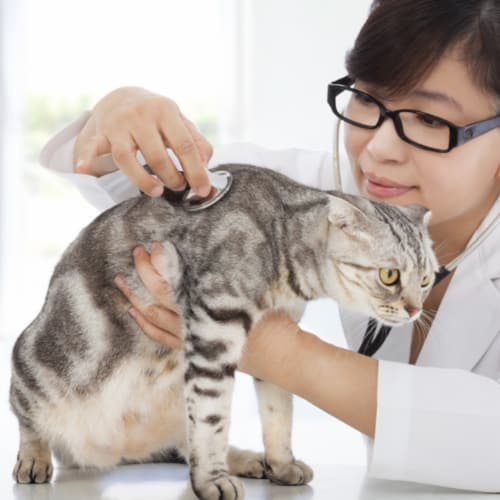
Once cats reach 1 year old, they enter adulthood and can be considered full-grown. While no longer undergoing rapid development like kittens, adult cats have evolving health priorities across their lifespan. Their vet visit schedule appropriately shifts focus to prevention, early disease detection and maintenance of good quality of life.
1 - 6 Years of Age
For a generally healthy adult cat from ages 1-6, an annual veterinary exam allows for the evaluation of organ function, dental health, parasite control, and more.
Recommended core vaccines may be boosted at this time as well. If living indoors strictly as a house pet, a once-yearly visit often sufficiently monitors evolving needs.
7 - 10 Years of Age
From 7 to 10 years old, a cat is in their senior stage and requires extra vigilance. Biannual vet exams every 6 months better detect age-related issues like kidney disease, arthritis, cancer, and cognitive dysfunction.
Testing kidney values, urine concentration and blood pressure also occurs routinely. Preventative care measures customize senior care plans.
11+ Years
For the geriatric life stage over 11+ years old, vet care continues every 6 months to monitor the progression of chronic diseases. Medications and nutritional support address senior cat needs like joint supplements, renal diets or hyperthyroidism treatments.
More frequent care assists with achy joints, lagging mobility, vision/hearing loss, and maintaining an enjoyable lifestyle. At-home caregiving may also be discussed for very elderly cats.
When to Visit the Vet Right Away?
While routine wellness exams play a vital role, certain emergency medical situations necessitate urgent veterinary care that cannot wait. In addition, some troubling symptoms warrant prompt vet evaluation for triage even if not life-threatening. Being able to recognize these scenarios empowers cat owners to seek timely intervention.
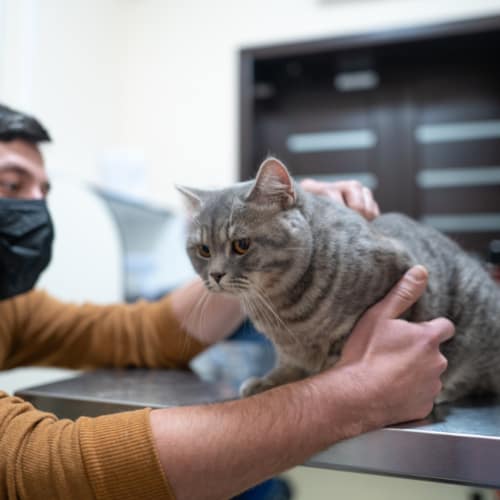
Medical Emergencies
Cats experiencing difficulty breathing, seizures lasting over 5 minutes or major traumatic injuries need immediate emergency veterinary assessment and lifesaving care.
Difficulty breathing suggests airway obstruction or severe respiratory distress that rapidly turns critical. Prolonged seizure activity risks brain damage without quick medication administration. Major wounds, falls from heights and motor vehicle accidents similarly threaten a cat’s welfare without swift action.
Calling ahead enables the vet team to prepare medications and equipment.
Concerning Symptoms
While not outright emergencies, sudden appetite changes, episodes of vomiting or diarrhea, and new mobility issues still justify a prompt vet visit.
A couple of episodes of vomiting may resolve, but continuous nausea signals gastrointestinal or other health problems. In particular, if your cat is vomiting undigested food, it could be a sign of a more serious issue. Learn more about the causes and potential treatments for vomiting undigested food in cats. Loose stools for over 48 hours risk dehydration, particularly in smaller cats.
Sudden difficulty jumping up on counters or hesitation using the litterbox demands medical investigation as well for pain control and to rule out dangerous issues like blood clots.
Catching subtle early symptoms provides the best opportunity to diagnose and treat many diseases before advancement. Even just a phone consultation guides the next steps.
Frequently Asked Questions
While individual factors impact each cat's optimal vet visit routine, many new pet owners have common questions when determining the right frequency of care. Here are answers to some often-asked questions.
How often should I take a healthy adult cat to the vet?
For healthy adult cats from ages 1-6 with no medical conditions, one annual wellness checkup a year sufficiently monitors their changing needs. This may increase to twice a year in senior cats over 6 years old.
Do indoor cats need to go to the vet as often?
Indoor-only living environments allow for less frequent vet visits than outdoor cats who face more pathogens and injury risks. However, annual exams remain important for indoor cats over 5 years old as they age.
What vaccines does my cat need and how often?
Kittens require a series of core vaccines, including rabies, FVRCP for feline viruses, and FeLV for leukemia. Most adult boosters occur every 1-3 years with some exceptions.
Ask your vet what serves your cat’s lifestyle best.
How much is a routine vet visit?
Regular wellness exams cost $45-$75 on average. Additional services like bloodwork ($100), dental cleaning ($700+), or diagnosing illnesses raise prices, but bundle deals through a chosen vet clinic can make budgeting easier.
Should I take my cat to the vet for grooming too?
Vets can provide specialized shaves for medical issues, but otherwise, groomers sufficiently handle bathing and nail trims. Wellness exams best use vet expertise to focus on clinical care.
Is pet insurance worth the cost?
Weighing premium costs against potential emergency bills of thousands, coverage can offset expenses at many clinics. Preexisting conditions often aren't covered, however, and budget leeway determines value.
Final Thoughts
Determining the ideal frequency of veterinary care is crucial for protecting cats at every life stage. Kittens require consistent wellness exams to properly nourish their developing minds and bodies, administer timely vaccines and treat juvenile illnesses promptly should they arise. Annual or biannual check-ups continue into adulthood based on health status, enabling vets to catch problems early and maintain quality of life long-term. Geriatric cats benefit from extra diligent monitoring as they age.
With attentive at-home caregiving between appointments, you now have a better understanding of how to recognize signs warranting prompt veterinary attention. Monitoring breathing difficulties, injury trauma and other concerning symptoms empowers lifesaving action when critical.
If you still have any questions or comments, please leave them below.
Thanks for reading!

